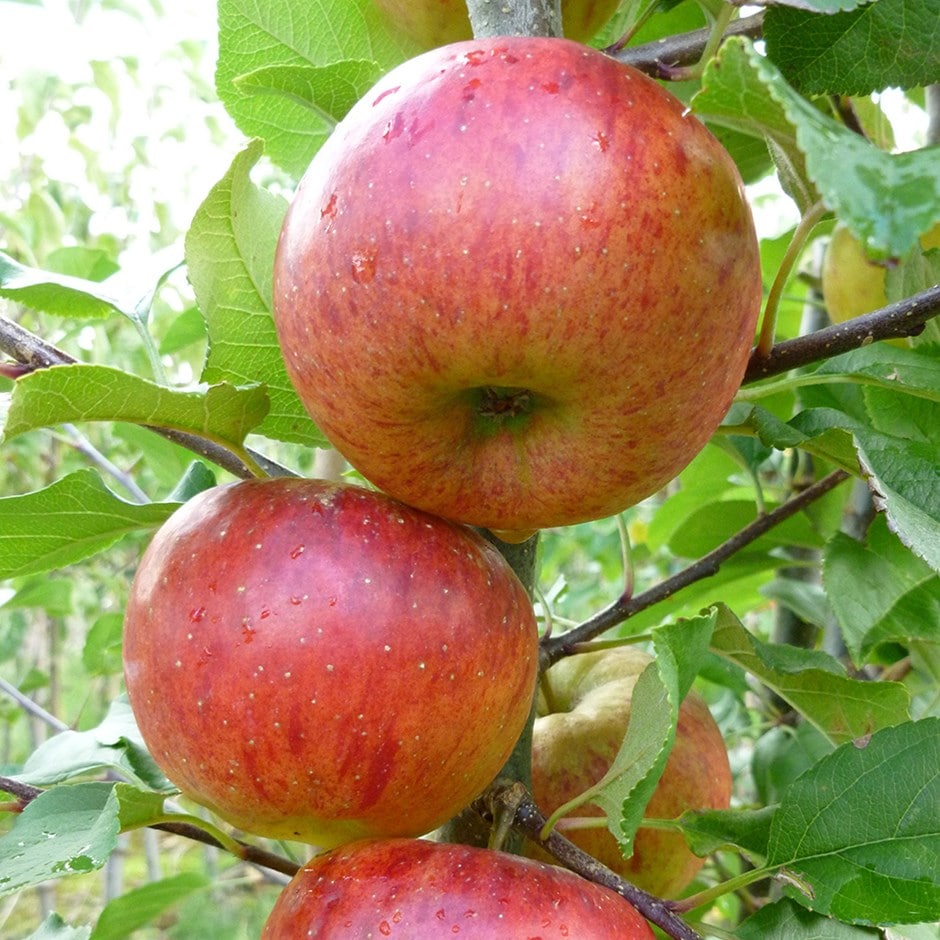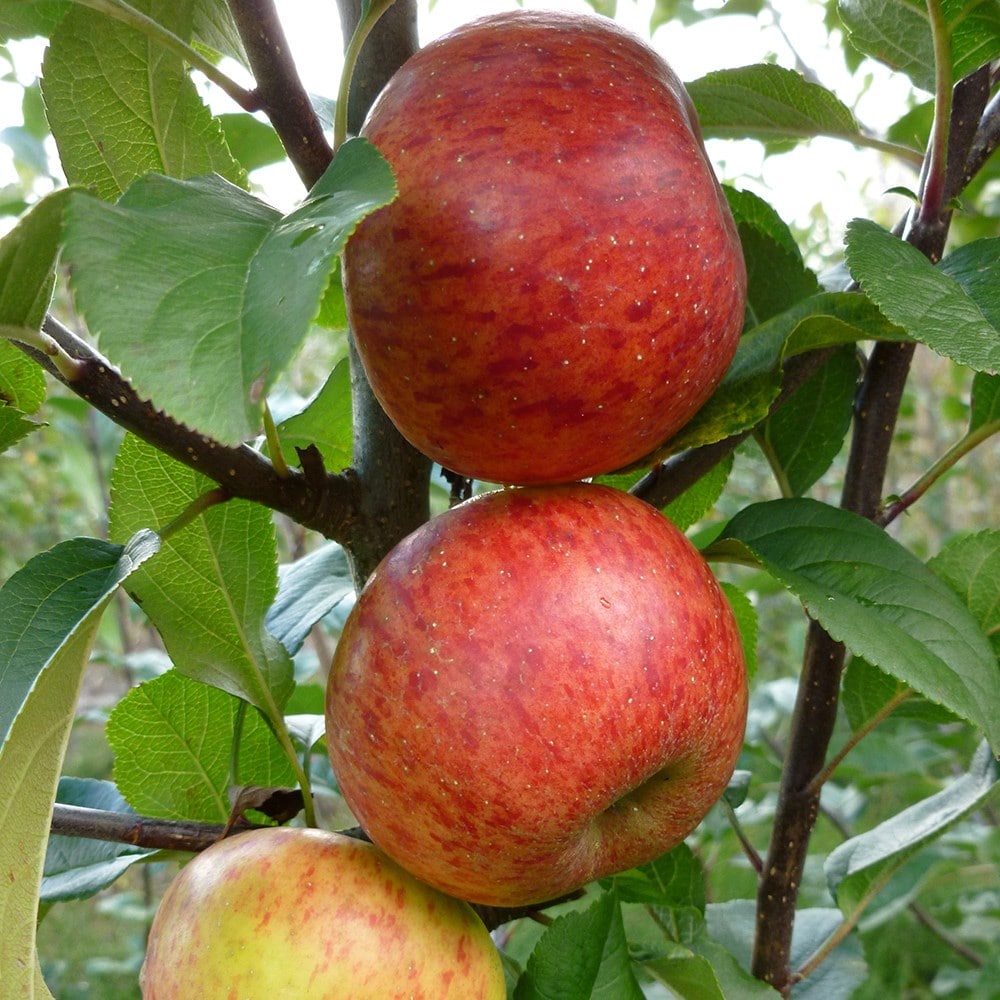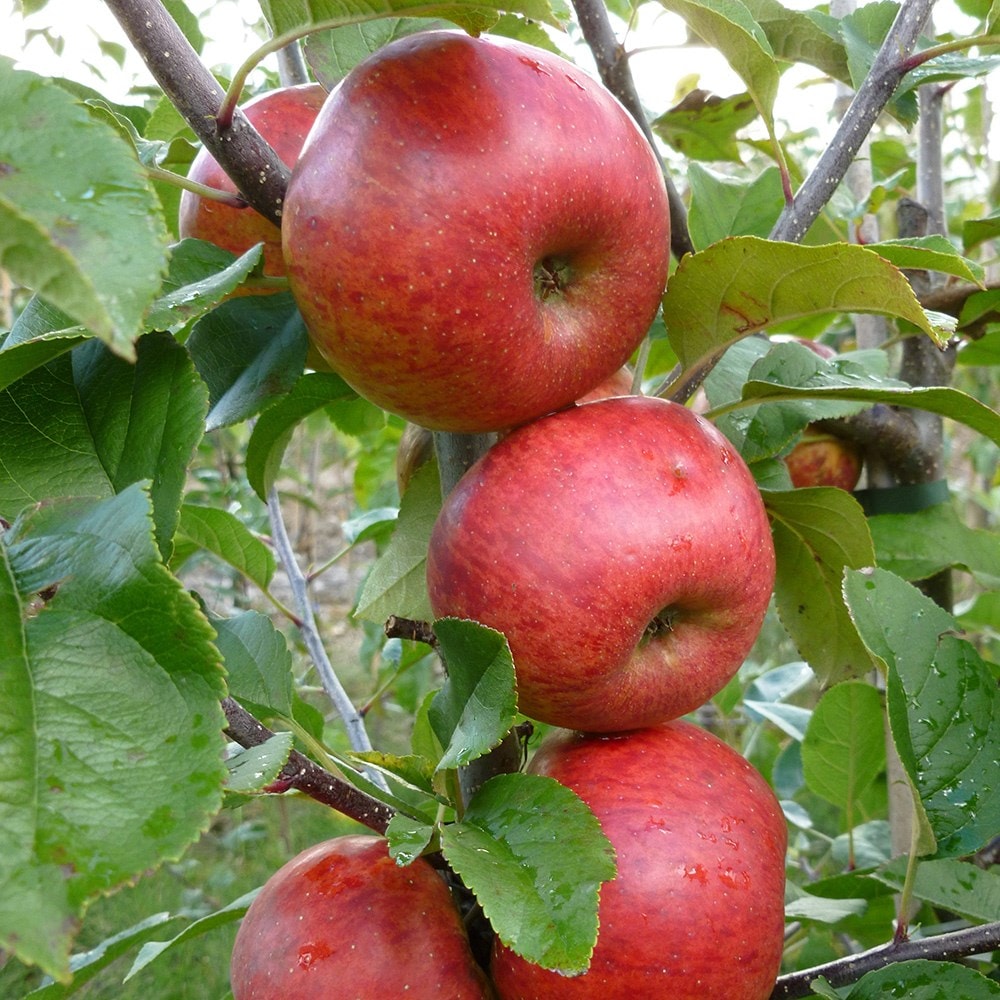apple 'Pixie'
eating / dessert apple
- 9 litre pot | M26 root stock | 1.2m
- £49.99
- In stock (shipped within 3-5 working days)
- bare root | M26 root stock | 1.2m
- £34.99
- available to order from autumn 2024
Delivery options
- Standard £7.95
- Position: full sun
- Soil: moderately fertile, moist, well-drained soil
- Rate of growth: average
- Flowering period: March to April
- Hardiness: fully hardy
- Garden care: When planting your apple tree, prepare a hole up to three times the diameter of its root system. Fork over the base of the pit in readiness, incorporating plenty of organic matter into the backfill and planting hole. Avoiding frozen and waterlogged soil, trees should be planted out as they arrive. If you've ordered a bare root tree, soak the roots in a bucket of water for half an hour prior to planting - or if this is not possible, they can be heeled in temporarily, covering their roots with soil, or potted up. Once in the ground, stake firmly and keep the base weed-free. Apply a balanced fertiliser in early spring to support growth and fruiting and provide regular watering during hot, dry spells. The main winter prune, avoiding frosty conditions, involves removing dead, dying, and diseased wood to create an open crown. Additionally, reduce leaders and laterals by a third to establish an airy structure without crisscrossing branches. In August, summer prune by shortening side shoots longer than 20cm (8”) back to three leaves, promoting fruit ripening and encouraging more fruit buds.
‘Pixie’, a diminutive apple bursting with flavour, with a mysterious lineage believed to be linked to either Cox's Orange Pippin or Sunset. As a descendant of Sunset, ‘Pixie’ shares striking similarities in both appearance and taste. Its flavour profile is exceptional, exuding a slightly sharper tang than a Cox, especially right after harvesting, with a sharpness that’s invigorating rather than acidic. Additionally, Pixie is refreshingly juicy and delightfully crisp, setting it apart from Cox apples.
Pollination information: This apple belongs to pollination group 4, and is not self fertile, so does not need a pollinating partner to produce a crop of apples. Use another apple variety or flowering crab apple in this group or those of group 3.
Pollination information: This apple belongs to pollination group 4, and is not self fertile, so does not need a pollinating partner to produce a crop of apples. Use another apple variety or flowering crab apple in this group or those of group 3.


